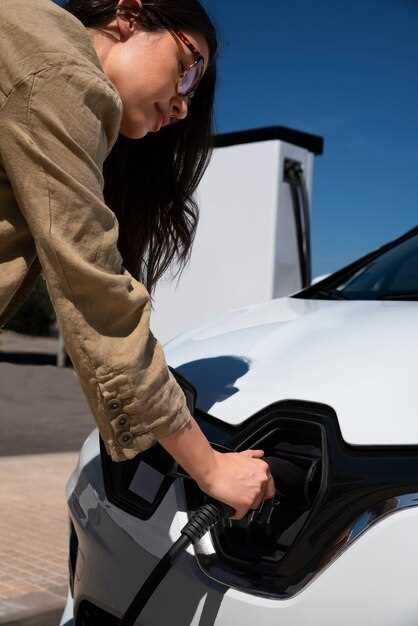How Hybrid Cars Save You Money on Gas

As the world becomes increasingly conscious of environmental issues and rising fuel prices, hybrid cars have emerged as a popular solution for cost-effective and eco-friendly transportation. Combining an internal combustion engine with an electric motor, hybrid vehicles offer significant advantages in fuel efficiency compared to traditional gasoline-powered cars. This innovative design not only helps reduce overall fuel consumption but also contributes to lower operating costs for drivers.
One of the primary ways hybrid cars achieve improved fuel economy is through regenerative braking. This technology captures energy that is usually lost during braking and converts it into electricity, which is then stored in the vehicle’s battery. By utilizing this stored energy, hybrids can rely less on the gasoline engine, leading to fewer fuel purchases. Moreover, many hybrid models can operate on electric power at low speeds, further decreasing fuel consumption during city driving.
Furthermore, hybrids are engineered for optimal fuel efficiency, often featuring advanced aerodynamics and lightweight materials. These design elements work together to enhance performance while reducing drag, making hybrids not only economical but also enjoyable to drive. By choosing a hybrid vehicle, drivers can experience substantial savings at the gas pump, making it a financially savvy choice in today’s economy.
Understanding the Dual Powertrain of Hybrid Vehicles
Hybrid vehicles are designed with a dual powertrain, which combines an internal combustion engine (ICE) with one or more electric motors. This innovative system allows hybrids to optimize fuel efficiency and reduce emissions while maintaining performance. Understanding how the dual powertrain functions is essential to appreciating the benefits these vehicles offer.
The key components of the hybrid powertrain include:
- Internal Combustion Engine (ICE): Typically powered by gasoline, the ICE generates power for the vehicle and works in tandem with the electric motor.
- Electric Motor: This motor draws power from a high-capacity battery pack, providing additional torque and enabling electric-only driving in certain conditions.
- Batteries: Usually rechargeable lithium-ion batteries, they store electrical energy to power the electric motor and support regenerative braking.
- Power Control Unit: This component manages the energy flow between the ICE and the electric motor, determining which source to use based on driving conditions.
The dual powertrain operates in several modes:
- Electric-Only Mode: The vehicle runs solely on the electric motor, ideal for short trips or low-speed driving.
- Hybrid Mode: Both the ICE and electric motor work together, maximizing efficiency under a variety of driving conditions.
- Regenerative Braking: Energy generated during braking is captured and stored in the battery, enhancing overall efficiency.
- Engine Running Mode: When the battery power is low or extra power is needed, the ICE takes over to provide the required propulsion.
This hybrid system not only improves fuel economy by reducing the reliance on gasoline but also contributes to lower emissions. By seamlessly switching between or combining power sources, hybrid vehicles can adapt to different driving environments, ultimately leading to substantial savings in fuel costs.
Comparing Miles Per Gallon: Hybrids vs. Traditional Gas Cars
When considering fuel efficiency, one of the most critical metrics is miles per gallon (MPG). Hybrid cars, which combine an internal combustion engine with an electric motor, typically provide superior MPG ratings compared to traditional gas vehicles. This efficiency results from the ability of hybrids to switch between electric power and gasoline, thereby reducing fuel consumption.
Traditional gas cars rely solely on gasoline, resulting in higher fuel usage, especially in stop-and-go traffic where idling leads to wasted fuel. In contrast, hybrids utilize regenerative braking to convert kinetic energy back into electrical energy, which can then be used to power the vehicle without consuming gasoline.
The following table illustrates a comparison of average MPG figures for common hybrid and traditional gas cars:
| Vehicle Type | Model | Average MPG |
|---|---|---|
| Hybrid | Toyota Prius | 56 MPG |
| Hybrid | Honda Insight | 52 MPG |
| Traditional Gas | Toyota Camry | 28 MPG |
| Traditional Gas | Ford Fusion | 23 MPG |
As shown in the table, hybrids such as the Toyota Prius and Honda Insight significantly outperform traditional gas vehicles in terms of MPG. This difference results in reduced fuel costs over time, making hybrids more economical for daily commutes and long-distance travel.
Overall, the efficiency of hybrid vehicles not only benefits individual drivers through lower fuel expenses but also positively impacts the environment by reducing greenhouse gas emissions. Thus, for consumers looking to minimize their fuel costs, hybrids present a compelling choice over conventional gas-powered cars.
How Regenerative Braking Saves Fuel in Hybrid Cars
Regenerative braking is a key feature in hybrid vehicles that significantly contributes to fuel efficiency. This system captures the energy that would typically be lost during braking and converts it into electrical energy, which is then stored in the vehicle’s battery for future use.
When a hybrid car slows down or comes to a stop, the conventional braking system generates friction that converts kinetic energy into heat, wasting that energy. In contrast, regenerative braking utilizes electric motors to reverse their function, acting as generators. This process revitalizes the vehicle’s battery by transforming the motion of the wheels into usable electrical power.
By harnessing this energy, hybrid cars can reduce their reliance on gasoline. The stored energy may later be utilized to assist the engine during acceleration, effectively decreasing the amount of fuel consumed. This is particularly beneficial in stop-and-go traffic, where braking happens frequently, allowing for more energy recovery and, consequently, improved fuel efficiency.
Moreover, regenerative braking helps in extending the lifespan of the brake components by reducing wear and tear on traditional brakes. This not only leads to lower maintenance costs but also improves overall vehicle performance and safety.
In summary, regenerative braking in hybrid cars plays a crucial role in minimizing fuel costs by converting kinetic energy into usable power, reducing fuel dependency, and enhancing the vehicle’s efficiency. This advanced technology represents a significant step towards sustainable automotive solutions.
The Role of Electric Motors in Fuel Efficiency

Electric motors play a crucial role in enhancing the fuel efficiency of hybrid cars by providing an alternative source of power to the internal combustion engine (ICE). These motors utilize electricity stored in batteries, allowing vehicles to operate on electric power alone during low-speed driving conditions. This reduces the reliance on gasoline, leading to significant fuel savings.
One of the key advantages of electric motors is their ability to deliver instant torque. This characteristic allows hybrid cars to accelerate more efficiently compared to traditional vehicles that rely solely on gasoline engines. The seamless integration of the electric motor with the ICE results in optimal performance by allowing the engine to run at its most efficient RPM range, thereby minimizing fuel consumption.
Regenerative braking is another innovative feature associated with electric motors in hybrid vehicles. This system captures energy typically lost during braking and converts it back into electricity, which is then stored in the battery. This process not only enhances energy efficiency but also reduces the frequency of fuel consumption by allowing the vehicle to rely more on electric power.
Moreover, the use of electric motors contributes to reduced emissions. By operating in electric mode during short trips or stop-and-go traffic, hybrids can significantly lower their carbon footprint, making them a more eco-friendly option. This shift not only supports environmental sustainability but also enhances the overall cost-effectiveness of ownership by decreasing the frequency of refueling.
In summary, electric motors are integral to the fuel efficiency of hybrid cars. From their ability to provide instant torque to their role in regenerative braking and emission reduction, electric motors contribute to a more economical and environmentally responsible driving experience.
Cost Savings from Reduced Emissions and Maintenance
Hybrid cars offer significant cost savings through lower emissions, which can lead to various financial benefits. The first major advantage is the potential for tax incentives and rebates. Many governments provide financial incentives for hybrid vehicle owners, which can reduce the initial purchase price and offset the costs associated with transitioning to a more eco-friendly mode of transportation.
Additionally, reduced emissions often result in lower costs associated with emissions-related regulations. Owners of hybrid vehicles may enjoy lower registration fees in some regions and may also be exempt from certain environmental taxes. These savings, though varying by location, contribute to the overall affordability of owning a hybrid car.
Furthermore, hybrids typically require less frequent maintenance compared to traditional gasoline vehicles. The combination of electric and gasoline power reduces wear on engine components and braking systems, leading to longer service intervals. For example, hybrid drivers don’t have to replace brake pads as often due to regenerative braking technology, which conserves energy and enhances efficiency. This results in fewer repairs and lower long-term maintenance expenses.
Moreover, the overall efficiency of hybrid vehicles leads to better fuel economy. Although fuel prices fluctuate, the savings gained from reduced fuel consumption can accumulate over time, providing a significant financial cushion for drivers. As fuel efficiency improves with hybrid technology, long-term fuel costs can be substantially lower than those associated with conventional vehicles.
In summary, owning a hybrid car not only contributes to a more sustainable environment but also results in notable financial advantages. From tax incentives to reduced maintenance costs, the overall savings from decreased emissions and efficient upkeep make hybrids an attractive option for budget-conscious consumers.
Government Incentives That Further Lower Costs for Hybrid Owners
Many governments around the world recognize the importance of promoting hybrid vehicles as a means to reduce environmental impact and promote energy efficiency. As a result, various incentives are offered to hybrid car owners, helping to lower their overall costs.
One of the most common incentives is the federal tax credit. In the United States, this credit can significantly lower the price of purchasing a hybrid vehicle, with amounts varying based on the model and battery capacity. This upfront reduction in cost can make hybrid cars more financially accessible for potential buyers.
In addition to federal tax credits, many states offer their own rebates and incentives. These programs can provide cash back or tax reductions at the time of purchase, further decreasing the financial burden on hybrid owners. Some states may also offer additional benefits such as exemptions from state sales tax, which can result in substantial savings.
Another aspect of government incentives includes grants and funding for charging infrastructure. For owners who opt for plug-in hybrids, many municipalities provide funding to install home charging stations, reducing the cost of transitioning to hybrid technology. Additionally, various public charging stations often offer reduced rates for hybrid vehicles, leading to lower fuel costs.
Insurance discounts are also a consideration. Some insurance companies provide reduced premiums for hybrid car owners, recognizing the lower risk associated with these vehicles compared to traditional gasoline-powered cars. This can lead to long-term savings over the life of the vehicle.
Finally, several local governments implement programs to encourage the use of hybrid vehicles through carpool lane access or reduced toll fees. These benefits not only provide convenience but can also lead to savings in time and money, making hybrid vehicle ownership even more appealing.
In summary, government incentives play a crucial role in making hybrid vehicles more economical. Through tax credits, state rebates, infrastructure support, insurance discounts, and additional conveniences, these incentives actively contribute to lowering the overall costs for hybrid car owners.

